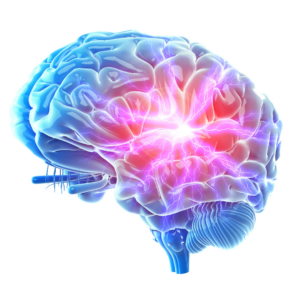The somatic wound of being unwanted

Some people grow up with a bone-deep knowing that their existence was never welcomed. Not planned. Not hoped for. A presence marked by burden rather than celebration. This knowing is felt in the nervous system, informing how someone perceives themselves, navigates relationships, and finds meaning in life. Clinicians might refer to this experience as the somatic imprint of being unwanted.
I recently made a TikTok video about this topic and it has amassed hundreds of comments. One commenter put it plainly: "My mom literally told me I was unwanted as a child... Nothing implicit about it."Another shared: "I was told if abortions were legal at the time I would not be here. I've always felt like I'm not supposed to be here."
These stories reflect a pattern of trauma that often begins in utero and reverberates throughout a person's day to day life, well into adulthood.
Some people grow up with a bone-deep knowing that their existence was never welcomed.
A somatic imprint refers to the way emotional experiences, especially trauma, get encoded in the body. When you are unwanted as a fetus, your developing nervous system registers that lack of welcome. Muscles tighten. Breath shallows. The internal narrative becomes: "It’s not safe to be here."
As one of my viewers wrote, “I feel like I’m not supposed to be here and I don’t belong.”
These experiences are reflective of pre-verbal trauma, communicated through hormonal signals and nonverbal attachment dynamics that occur before the development of language or conscious memory. They can become the foundation of a person’s emotional architecture.
The emotional messages such as “You’re too much,” “You shouldn’t exist,” “I didn’t want you” settle into the body and shape how a person experiences themselves. One commenter described it as, "I need permission to breathe most days." These early experiences shape core beliefs and attachment styles that persist into adulthood. A person may live with chronic shame, dissociation and a gnawing sense that they have to earn their right to exist.
The internal narrative becomes: "It’s not safe to be here."
The imprint of unwantedness doesn’t stop with one generation. It ripples.
In their attachment-based perspective on intergenerational trauma, Meulewaeter and De Pauw (2019) highlight how unresolved trauma in parents, especially mothers, can lead to insecure attachment, emotional dysregulation, and even substance use in the next generation (Meulewaeter & De Pauw, 2019). This experience can shape the emotional landscape of future generations.
Another commenter shared: “My mother had a miscarriage prior to me. Then my abusive father abused my mother and that resulted in me... My mother due to her own trauma let me know I was an unwanted pregnancy.”
This is how trauma begets trauma. When emotional injuries remain unacknowledged or unresolved, they often show up in how we relate to others, sometimes in ways we don’t even notice.
How I work with this in therapy
Clients who carry this wound often arrive in my office carrying more shame than language. They say things like:
“I feel like a mistake.”
“I don’t know why I can’t relax around people.”
“I always feel like a burden.”
The work begins not with fixing but with reflecting back and mirroring what the client’s body and story are already expressing. I might say: “What if the way your body braces is related to feeling like it's not safe to exist?” We begin with the body. Grounding. Breath. Exploring the edges of their embodied experience. Then we work with the core need: “It is safe for me to exist.”
This can be agonizing at first. Many clients have no internalized model of that safety. For example, I might notice how a client's shoulders rise slightly when we talk about belonging and reflect it back by saying, "I notice your body hunching over as we talk about this—does it feel like there's a part of you that wants to disappear?" We build a new sense of safety slowly, relationally. This is where attachment-focused therapy intersects with somatic work. The body needs new experiences of connection and presence in order to shift.
I often use parts work to engage the protective parts that formed early in response to feeling unsafe or unwanted. For instance, if a client begins to cry and then quickly stifles it or apologizes, I might gently reflect, "I notice you're holding back your tears...does it feel like there's a part of you that's learned it's not safe to be seen in your pain?" These parts were never bad. They were brilliant survivors. But now they may be keeping the person from feeling fully alive.
The work begins not with fixing but with reflecting back and mirroring what the client’s body and story are already expressing.
Healing this wound means facing the unbearable. Naming what was never said. Validating what was never acknowledged: You are not a burden. You never were. Your body is not wrong for how it adapted. This is something I hold in the therapeutic space, guiding clients gently toward it, but the insight carries more power when they arrive at it themselves.
We build new neural patterns through safe relationships. That means slowing down. Co-regulating. Learning that it's possible to take up space without being punished. As trust grows, the body gradually lets go of its guarded stance. Breathing becomes easier. The sense of being allowed to exist begins to move from an abstract idea into something the client can feel in their body.
You are not a burden. You never were. Your body is not wrong for how it adapted.
If you’ve lived with the sense that you don’t belong, that your existence is conditional or accidental, know this: Your feelings make sense. Your body remembers things your mind can’t. And that doesn’t make you broken. As clinicians, our job is to eradicate the platitudes and to hold space for the unspeakable. We must help the nervous system learn safety, often for the first time.
References
Meulewaeter, F., & De Pauw, S. S. W. (2019). Mothering, substance use disorders and intergenerational trauma transmission: An attachment-based perspective. Frontiers in Psychiatry, 10, 728. https://doi.org/10.3389/fpsyt.2019.00728





